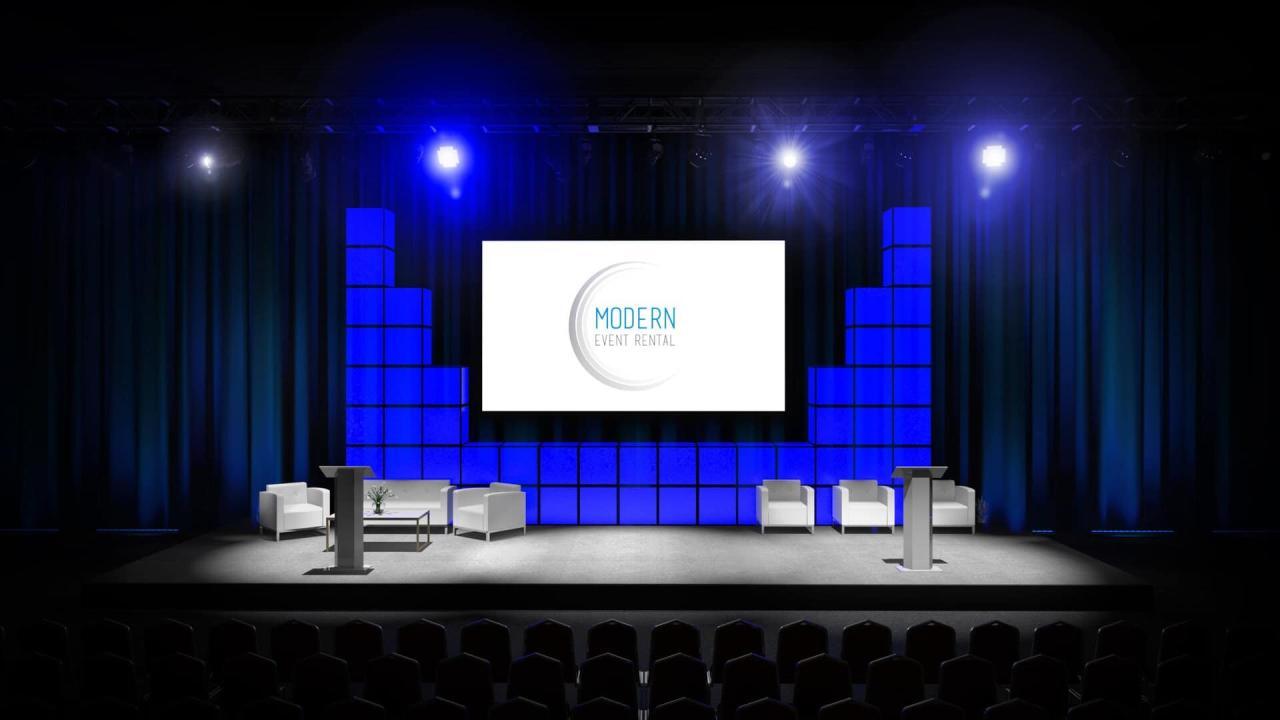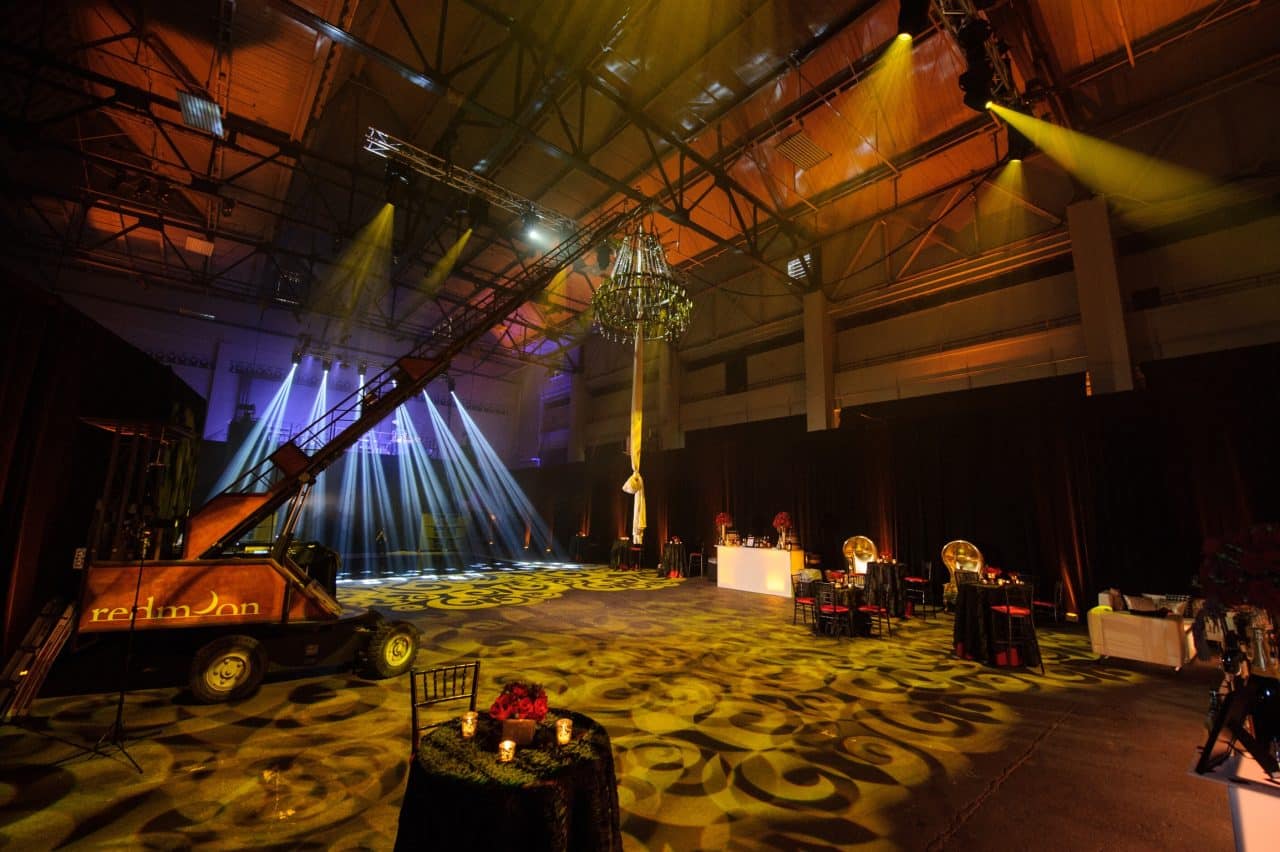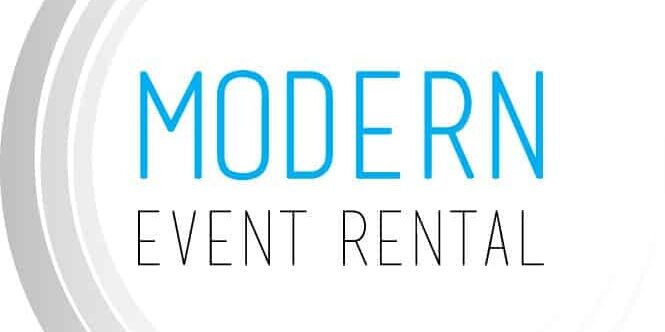HOW TO DESIGN A STAGE CONCEPT FOR THE AUDIENCE

Designing a stage that captivates your audience can often feel like a tough puzzle to solve. A key fact is, the right event stage design not only grabs attention but enhances overall engagement.
Our article breaks down the steps to craft a stage concept that will keep all eyes fixed on the action – without you needing to be an expert in event production. Dive in for secrets to success!
Key Takeaways
- Understand your event’s purpose to guide the stage design. This helps you make choices that keep the audience engaged and meet your goals.
- The size of the stage should match the venue and number of attendees. Make sure it fits well in the space without overwhelming or getting lost.
- Pick colors and lights that create the right mood for your event. Use them to tell a story and connect with your audience emotionally.
- Position props, lighting, screens, and speakers so every guest can see and hear clearly no matter where they are seated or standing.
- Get creative with shapes, textures, and seating arrangements to make a unique experience that will stay in people’s minds after they leave.
The Importance of Stage Design
Stage design is key to grabbing the audience’s attention and keeping it. Good design can tell a story without words, using colors, shapes, and lights. It sets the scene for actors or presenters and gives the audience a sense of what to expect.
A stage with care put into its look can make people feel excited, curious, or moved.
Think of stage design as the backbone of an event. It guides where people look and how they feel during a show or presentation. Lighting plays a huge role in mood-setting while sound systems need blending into the background seamlessly.
Each detail works together to create an unforgettable experience that matches the event theme and goals.
Guide to Designing a Stage for an Audience
Creating a stage concept that captivates an audience goes beyond mere aesthetics; it requires strategic planning and insightful design choices that resonate with the event’s core purpose.
From visual impact to acoustic clarity, every decision must focus on enhancing the overall attendee experience—let’s delve into how you can craft a stage setup that truly speaks to your audience.
Identify the Purpose of the Event
Knowing the event’s purpose sets the stage for success. It guides every choice from lighting to layout. This purpose might be to educate, celebrate a launch, honor achievements, or network professionals.
A clear goal steers the design towards engaging the audience and fulfilling event goals.
Designing with these objectives in mind attracts sponsors and makes money through smart space use. You’ll want to think about how each element serves your main aim. Will a grand chandelier wow attendees at a gala? Does a high-tech look fit an education seminar? Getting this right means your event leaves guests impressed and talking long after it ends.

Determine the Stage Size
Look at the event venue to decide on your stage size. Think about how many people will be there and how much space they’ll need. Big stages work well for concerts where performers move around a lot.
Smaller stages are great for talks or panels, where speakers stay in one spot.
Make sure your stage doesn’t overwhelm the room or get lost in it. You want everyone to see and hear what’s happening on stage clearly. Use the seating capacity and screen numbers as guides for finding just the right size.
Keep things balanced—your event strategy should include a stage that fits nicely with your venue’s size and shape.
Plan the Stage Layout
Map out where everything will go on your stage. Think about the flow of movement for speakers and performers. Place platforms and steps where they’re needed most. Make sure there’s plenty of space for all the action that’ll happen.
Use 3D layouts to get a clear view of how your stage will look from every angle. Check that guests can see well no matter where they sit. Arrange seats so no one’s view is blocked by cameras or equipment.
Consider walking paths too, so everyone can move around easily and safely.
Choose a Color Scheme
Picking the right color scheme sets the stage’s mood. It’s like painting emotions that connect with your audience. Choose colors that match the event theme to create a powerful impact.
A well-chosen palette can tell a story without words, engaging viewers from the moment they walk in.
Mixing colors and lights builds an experience no one will forget. Make sure everything works together for a stunning visual effect. Use lighting to deepen the impact of your colors, making them pop or soothing them into softer shades where needed.
This fusion is key to designing an unforgettable stage concept that resonates with everyone watching.
Select Appropriate Lighting
Choosing the right lighting can make a big difference on stage. It sets the mood and keeps your audience comfortable. Use LED lights for their cool temperature and energy savings. Think about what feelings you want to create.
Bright, colorful lights can excite guests, while soft, warm lights might make them feel relaxed.
Placement of lights is key too. You’ll need spotlights for speakers and different areas of the stage might need more light or shadow to add depth. Special effects like gobos create patterns or images with light – they can turn a simple stage into something magical.
Remember, good lighting makes sure everyone in the audience sees all aspects of your event design clearly.
Consider Audio and Visual Equipment
Good sound and clear visuals take your event from okay to amazing. Pick microphones, speakers, and screens that suit the room’s size. Think about where you will place them so everyone sees and hears without trouble.
Use technology that matches your needs—maybe a computer for presentations or video for virtual events.
Make sure the equipment blends with the stage design. Hide wires and speakers when possible to keep things looking neat. Test everything before the event starts to avoid surprises.
With great audio and visual tools, your audience stays focused on what matters—the message of your event!
Key Components of Event Stage Design
Stage design transcends mere aesthetics, incorporating fundamental aspects like acoustics and sightlines—crucial for captivating an audience; delve deeper to master the art of creating impactful event spaces.
Props and Elements
Props and elements bring your stage to life. They add color and texture, making the space feel full and vibrant. Imagine LED lights dimming to create a soft, welcoming glow for your guests.
Props like colorful banners or fabric can hang from the ceiling, adding depth and interest. Small decorations scattered across the stage tie everything together with bursts of color that catch the eye.
Use clouds above to signify different moods; they can shift colors throughout the event, acting as an optical illusion for an immersive experience. Every prop should serve a purpose, fitting seamlessly into your overall theme.
Draw out each set piece carefully before building it—this ensures you have all materials ready and nothing is forgotten or misplaced during setup. Each element works together like pieces of a puzzle creating one cohesive picture that wows the audience from every viewpoint.
Audience Viewpoints
Think about where people will sit or stand. Everyone should see the stage well, from every spot in the venue. Put yourself in their shoes to test out different angles and views. Make sure no part of the show is blocked by props, equipment, or stage elements.
Consider live streaming for guests who can’t attend. This brings your event to viewers anywhere with an internet connection. Good camera positions are key here too – they help remote viewers feel like they’re part of the audience.
Keep those at home engaged by offering a perspective that’s as close to being there as possible.
Lighting
Lighting sets the stage’s mood and focuses attention where it’s needed. Bright lights energize the crowd, while soft glows create intimate settings. Use spotlights to highlight speakers or performers, ensuring they stand out in front of your audience.
Colors also play a key role; different hues can evoke emotions and complement the event theme.
Effective lighting takes careful planning. Consider how each light will affect the audience engagement and viewpoint. Incorporate creative commons for unique effects that wow guests without breaking your budget.
Always test lighting before the event to avoid surprises and adjust for maximum impact on show day.
Inspiration from Top Events
5. Inspiration from Top Events: Dive into a treasure trove of creativity by exploring how the masters of event production craft unforgettable experiences at prestigious trade shows.
Witness first-hand the innovation that propels stage design to new heights, sparking your imagination and fueling your own concept development.
Explore Examples from Top Trade Shows
At top trade shows, designers use cloud installations and bright LED lights to wow the crowd. These elements make stages pop and draw people in. Think about how props can pull viewers into the action.
Imagine interactive displays where people touch and feel part of the event.
Unique seating gets folks talking too. Some stages ditch rows of chairs for a mix of sofas and standing areas. This adds fun and keeps energy high. Minimalist designs let brands shine without clutter on stage.
With these ideas, events turn into magical places that stick in your mind long after you leave.
How to Create Unique Stage Designs
Unleashing creativity in stage design transcends conventional boundaries – it’s about envisioning a space that captures the essence of your event while resonating with every member of your audience, sparking an unforgettable experience; delve deeper to discover the art of crafting these captivating environments.
Finalize Event Theme
Deciding on your event theme is a big deal. It sets the tone for everything that follows. Think about the message you want to convey and how you can surprise your audience. Do they expect a formal setting or something out of the ordinary? Your theme could be sleek and high-tech, or maybe warm and natural.
Choose decorations, colors, and props that match your theme. Use stage shapes to create an interesting backdrop for speakers or performers. If it’s a magical forest theme, add greenery and fairy lights to make it enchanting.
For a futuristic vibe, go with stark whites, metallics, and cool lighting effects. Every choice should support the overall feel of your event while keeping those who will share in the experience at the heart of your decisions.
Keep Audience in Mind
Understanding your audience is crucial for a successful stage design. Ask them what they like before the event with surveys. This shows you care about their preferences and helps create a more personalized experience.
For example, if the crowd loves social media, include fun photo spots like a flower wall to keep them talking about the event long after it’s over.
Design all visual and audio aspects for maximum impact from every angle. Make sure everyone in the room has a clear view and can hear perfectly. Use lighting to set the mood and props that resonate with your audience’s interests.
Keep checking that everything feels right for those who will be watching – they’re why you’re putting on this show!
Experiment with Shapes and Textures
Get creative with shapes and textures to make your stage stand out. Mix circles, squares, and abstract forms for a unique look. Use raised platforms or textured backdrops to add depth.
Try shiny materials for a modern vibe or rough wood for rustic charm. Play with these elements until you find the perfect combination that grabs attention and adds to the event’s purpose.
Patterns can also bring life to your design. Project waves onto smooth surfaces or hang geometric cutouts that cast interesting shadows. Soft fabrics can soften the space while metal pieces reflect light in eye-catching ways.
Let these choices work together to create an experience that wows everyone in the room.
Conclusion
Designing a stage for an audience is like creating a magical world where every detail counts. Remember, the goal is to captivate and hold your guests’ attention from start to finish.
Mix colors, lights, and shapes to craft an experience they’ll remember. Your event’s success hinges on how well you tell its story through design. Let your creativity flow and watch as your stage becomes the heartbeat of the event!
For more stage design inspiration, check out our curated list of top trade shows in Detroit.
Back To Blog